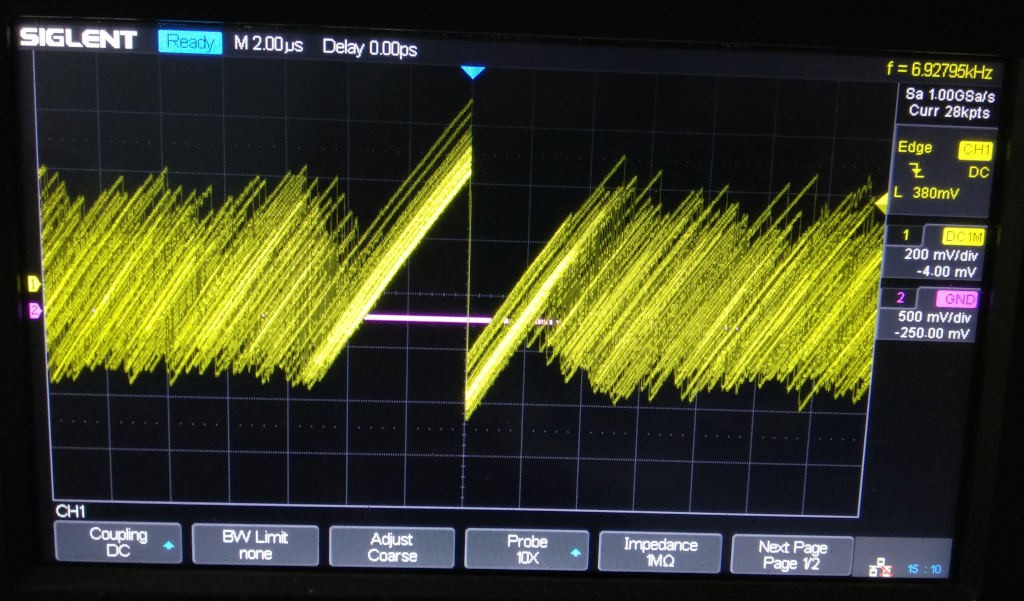This is the interesting part of the device! Before we launch into the specific implementation, I realize a little background might be useful.
Some of you may have heard of the Heisenberg uncertainty principle. A good summary is here: https://www.physicsoftheuniverse.com/topics_quantum_uncertainty.html
To summarize that summary, imagine trying to view an electron in a microscope. It doesn't matter what the magnification of your microscope is, you won't be able to see an electron using visible light. The ability of light to resolve objects depends on its wavelength -- if what you are trying to see is smaller than the wavelength of the light you are trying to bounce off it, you're not going to have much luck and it will not be visible.
We can imagine using higher frequency light though, right? To resolve an electron, we'd need very high frequency light called gamma rays. This replaces our previous problem with a new one: gamma rays have are powerful enough to significantly increase the energy of the electron we're trying to observe, increasing its momentum. The very act of measuring the electron's position requires that we change its momentum -- we cannot know both at the same time.
It turns out this is true in general (we cannot simultaneously know the position and momentum of anything), however the effect size is only noticeable for very small things.
Where this becomes relevant to us, is that the momentum of an electron is typically measured in 'electron volts' or eV. One eV is the energy imparted on an electron by a potential difference of one volt. In our Event Generator, we are using a 10V power supply, so we know the momentum of the electrons should be close to 10eV.
Since I know that with some level of accuracy, that means I can't know exactly where the electrons in my circuit are. The semiconductor junction in my circuit might be rated for, say... 100V, but it also has a defined width! If it's narrow enough, sometimes the 10V electrons I would expect to be on one side of the junction are actually on the other side!
How did they get there? One proposed mechanism is that they 'borrow' energy from the environment via virtual particles, and 'pay it back' once they are on the other side. An even weirder debate is how long it takes to happen -- with several estimates being significantly faster than the speed of light (while I'm skeptical, this isn't prohibited unless it can transmit information, see apparent speed for more information).
In any case, it happens and we can measure it. The signal is rather unique looking! It's characterized by a sudden change in voltage when the tunneling event occurs, followed by a decay. If you set your scope settings just right, the noise pattern looks really neat!

The signal does have a pretty big DC offset compared to its amplitude though. So besides providing a suitable junction for electrons to tunnel across, we also filter out this DC offset using a 0.1 uF capacitor.
Note that I've presented the explanation for tunneling that seems most intuitive to me. There are other ways of thinking about it (e.g. with waveforms). It's a nice Wikipedia rabbit hole if you don't mind your afternoon vanishing.
Discussions
Become a Hackaday.io Member
Create an account to leave a comment. Already have an account? Log In.